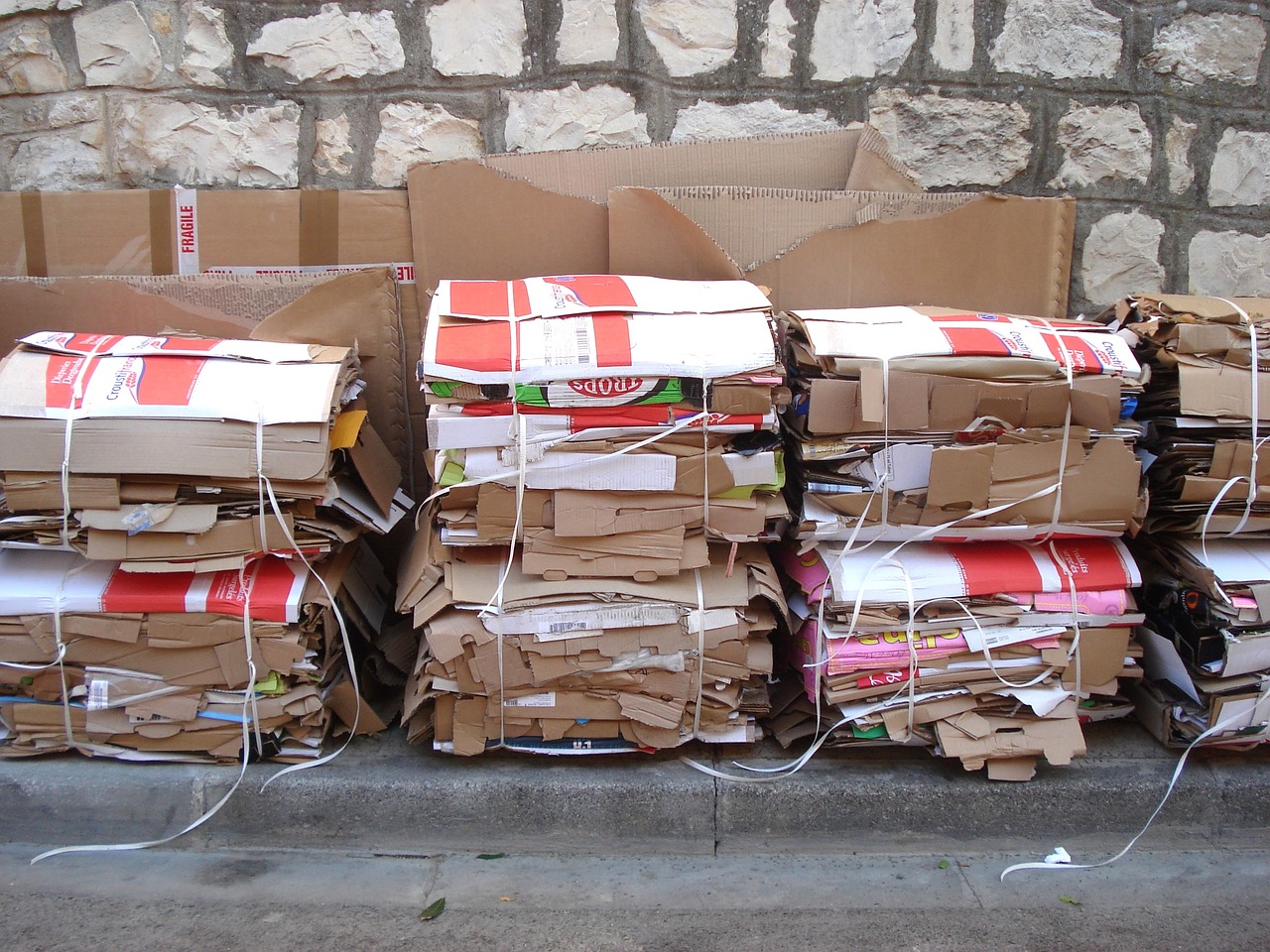Let’s dive into the fascinating world of sustainable architecture and explore the vital role that waste management plays within it. As we journey through the realm of eco-friendly building practices, we’ll uncover how effectively managing waste not only preserves our environment but also enhances the durability and efficiency of our structures. Together, we’ll see how incorporating waste reduction strategies and recycling initiatives into architectural design can significantly reduce our ecological footprint and pave the way for a greener, more sustainable future. Have you ever wondered why waste management is so crucial in sustainable architecture? As we look around our urban spaces and witness the ongoing construction projects, it’s evident that the built environment significantly influences our planet. This brings us to an essential question: What exactly is the role of waste management in sustainable architecture?
Understanding Sustainable Architecture
Before diving into waste management’s role, let’s first understand what sustainable architecture entails. Sustainable architecture seeks to minimize the negative environmental impact of buildings by enhancing efficiency and moderating the use of materials, energy, and development space. It involves using methods and materials that are resource-efficient throughout a building’s life cycle, from siting to design, construction, operation, maintenance, renovation, and deconstruction.
Core Principles of Sustainable Architecture
- Energy Efficiency: Designing buildings that use less energy, potentially through renewable sources.
- Water Efficiency: Saving water and recycling wastewater.
- Material Optimization: Using sustainable, renewable materials that are less wasteful.
- Indoor Environmental Quality: Enhancing air quality and natural lighting inside buildings.
- Site Optimization: Utilizing space responsibly to mitigate environmental impact.
These principles collectively forge a path towards a more sustainable built environment. However, integral to these principles is the effective management of waste, which brings us back to our primary discussion.
The Necessity of Waste Management
Waste management is much more than just removing trash. It involves the regular collection, transportation, processing, disposal, and recycling of waste materials. In the context of sustainable architecture, waste management is critical for reducing the harmful impact on the environment, contributing to a circular economy, and bolstering the use of sustainable materials.
Types of Waste in Construction
Construction waste varies and includes several different materials, each requiring specific handling. Here’s a look at the types of waste we often encounter in construction projects:
| Type of Waste | Description |
|---|---|
| Concrete and Asphalt | Often the most voluminous, comes from demolished buildings and roadworks. |
| Wood | Lumber, timber, and other wooden construction materials. |
| Metals | Steel, aluminum, and other metallic structures and fittings. |
| Glass | From windows and other architectural elements. |
| Bricks | Comes from demolitions and renovations. |
| Plastics | Used in everything from conduits to piping systems. |
| Hazardous Materials | Asbestos, lead, and other substances requiring careful handling and disposal. |
Proper waste management in these areas ensures the environmental footprint of construction is reduced and resources are used more efficiently.

Role of Waste Management in Sustainable Architecture
Reducing Environmental Impact
One of the foremost roles of waste management in sustainable architecture is the reduction of environmental impact. Construction and demolition waste contribute significantly to landfill volumes. By implementing recycling and reuse practices, we can dramatically cut down on this waste.
Landfill Reduction
Reducing the amount of waste sent to landfills lessens the methane emissions from decomposing materials and decreases the leachate that can contaminate groundwater. This is achieved by:
- Recycling: Materials like metal, wood, and concrete can be processed and reused in new projects.
- Reusing: Intact materials from demolished structures can be incorporated into new buildings.
Saving Resources
Efficient waste management helps in conserving natural resources. When materials are recycled, fewer raw materials are needed, preserving forests, waterways, and mineral resources. For instance, recycling metal reduces the need for virgin ore mining, which is both environmentally damaging and energy-intensive.
Resource Optimization
- Material Recovery Facilities (MRFs): These facilities sort and process recyclable materials, significantly reducing the demand for new resources.
- On-site Waste Segregation: By sorting waste on-site, we can ensure higher quality and purity of recyclable materials, making them more valuable and easier to process.
Enhancing Building Quality
Sustainable architecture isn’t just about being green; it’s also about creating quality structures. Proper waste management practices ensure harmful substances are kept out of the construction cycle, resulting in healthier buildings.
Indoor Environmental Quality
Materials containing volatile organic compounds (VOCs) or other pollutants can degrade indoor air quality. By managing waste effectively:
- Hazardous Waste Handling: Ensuring that hazardous materials like asbestos are correctly disposed of prevents them from becoming a health hazard.
- Material Selection: Using recycled and non-toxic materials improves air quality and contributes to a healthier living environment.
Practical Strategies for Waste Management in Sustainable Architecture
Design Phase
Waste management should start at the very beginning of the building process, during the design phase. Architects, engineers, and builders can collaborate to integrate waste management strategies into their plans.
Design for Disassembly
Design buildings in a way that allows for easy disassembly and reuse. This innovative approach involves:
- Modular Construction: Utilizing prefabricated modules that can be independently replaced, reused, or recycled.
- Unbolting Rather than Demolition: Using techniques and designs that make it easier to deconstruct buildings at the end of their life without the need for destructive demolition.
Construction Phase
While the construction phase is likely where the most immediate waste occurs, it’s also where there’s the most opportunity to manage and minimize it.
On-site Waste Management Plans
Effective on-site waste management plans are crucial. Such plans should:
- Segregate Waste: Clearly marking and separating different types of waste so they can be appropriately recycled.
- Identify Recyclable Materials: Recognizing which materials can be recycled locally.
Operations and Maintenance Phase
Once a building is operational, ongoing waste management remains vital. This can involve:
Active Recycling Programs
- Occupant Guidelines: Encouraging building occupants to practice recycling through education and accessible recycling facilities.
- Sustainable Maintenance: Using eco-friendly cleaning products and materials during the building’s life.
Waste-to-Energy Programs
In some cases, non-recyclable waste can be converted into energy. Waste-to-energy programs involve:
- Incineration with Energy Recovery: Safely burning waste materials to generate electricity.
- Biogas Production: Organic waste can be anaerobically digested to produce biogas, a renewable energy source.

Waste Management Technologies
Technological advancements are crucial in revolutionizing waste management within sustainable architecture. Various tools and technologies advance our capability to handle construction waste more effectively.
Building Information Modeling (BIM)
BIM enables detailed planning and management of building projects. It can identify areas for waste reduction and optimize material usage throughout the building life cycle.
- 3D Visualization: Helps simulate construction processes to reduce the likelihood of errors and waste.
- Material Tracking: Keeps a detailed log of materials used, promoting accountability and efficient reuse or recycling.
Smart Waste Solutions
With the rise of the Internet of Things (IoT), waste management has incorporated smarter practices.
- Sensor-Based Monitoring: Using sensors to monitor waste bins, alerting when they need emptying and reducing unnecessary pickups.
- Data Analytics: Leveraging data to predict waste generation trends, enabling more proactive management strategies.
Implementing Effective Waste Management Policies
Well-crafted policies play a pivotal role in driving waste management practices. Adopting robust policies at the governmental and organizational levels ensures adherence to sustainable principles.
Government Regulations
Governments worldwide are increasingly mandating waste management practices in construction.
- Building Codes: Stringent building codes that incorporate waste management requirements.
- Landfill Taxes: Taxes on landfill usage to incentivize recycling and waste reduction.
Organizational Policies
Organizations committed to sustainability often develop internal waste management policies.
- Corporate Social Responsibility (CSR): Sustainable waste practices often form a part of CSR activities.
- Green Certifications: Pursuing certifications like LEED which include waste management as a criterion.

Case Studies of Sustainable Architecture with Effective Waste Management
The Edge, Amsterdam
The Edge, one of the world’s most sustainable buildings, practices meticulous waste management:
- Zero Waste Initiative: Almost all waste generated during construction was reused or recycled.
- Material Efficiency: Use of prefabricated building systems reduced waste significantly.
The Bullitt Center, Seattle
The Bullitt Center, renowned for its sustainability features, also showcases stellar waste management:
- Cradle-to-Cradle Certification: Materials used are evaluated for their life cycle, ensuring they are recyclable or biodegradable.
- Comprehensive Waste Plan: Even during operation, they maintain a strict waste reduction and recycling plan.
Challenges in Implementing Waste Management
While the advantages are clear, several challenges hinder effective waste management in sustainable architecture.
Costs
Initial costs for implementing waste management technologies and practices can be high. However, these costs can be offset over time through savings on materials and waste disposal.
Training and Awareness
Proper waste management requires trained personnel and widespread awareness. Without adequate training, efforts can fall short.
Regulatory Hurdles
Inconsistent regulations across different regions can complicate the implementation of cohesive waste management strategies.
Future Trends in Waste Management
The landscape of waste management in sustainable architecture is evolving. Here are some emerging trends:
Circular Economy
Transitioning from a linear to a circular economy where materials are reused continuously could redefine waste management.
Advanced Recycling Techniques
Innovations like chemical recycling and upcycling offer the potential to handle a broader range of materials more effectively.
Integration of AI and Robotics
AI and robotics can optimize waste segregation and processing, increasing efficiency and reducing human error.
Conclusion
Waste management’s role in sustainable architecture cannot be overstated. By reducing environmental impact, saving resources, and enhancing building quality, it forms a cornerstone of sustainable practice. Effective strategies, supported by advanced technologies and robust policies, can ensure we make significant strides towards a more sustainable future. Challenges remain, but with collective effort, training, and innovation, we can overcome them and build a world where our architectural endeavours align with our environmental responsibilities.



